“…I want to give you something that, when you look at, you shall always remember me, I’m going to give all of you a curl of my hair; and when you look at it, think that I loved you and am gone to heaven, and that I want to see you all there." (1)-Harriet Beecher Stowe
 |
| In these famous remains of the bog bodies, the hair cascades in wild tuffs. There's a personality that comes through in the hair. Was this person a rock star or just a busy author who never brushed her hair? What we do know is that this person was probably not a redhead. |
While stolen skulls, jarred hearts, and saved bones seem to all look similar, there is something singular about hair. Maybe it is the indestructible nature of those strands of keratin to withstand the decomposition that flesh cannot. Maybe it is because we remember our loved ones by the halo of hair that surrounds their face.
In 2015, I had my own pained relationship with hair while writing my latest book. As anyone who has ever experienced sudden hair loss from a chemo drug will tell you, the day it falls out….you are not prepared. The day it happened to me was any other day. I was rushing around trying to get the kids off to school and putting my hair into my usual no fuss ponytail. When I began to pull the hair back, a large clump came out in my hand. Over the next several months, more strands fell to the bathroom floor.
 |
| This was my blonde doppelganger. |
You might be a redhead in death
 |
| Marie Antoinette's hair certainly looks red in this locket, but hair actually turns redder after we die. |
Our bodies are made up of water. After we die, we lose that water. The flesh shrinks and retracts which pushes the hair forward making it seem like the hair has grown. This confusion led medieval people to believe corpses were not really dead and inspired tales of revenants – the first vampires.
There’s a lot of poison in hair
Arsenic has been found in many examples of saved hair, but this does not always indicate the person was poisoned. In They Lost Their Heads, I traced the origins of arsenic found in Beethoven’s hair, but conspiracy theorists have also wondered if Napoleon was poisoned. Like Beethoven, Napoleon’s hair revealed levels of arsenic well above the normal limit.
Unfortunately, it is very difficult to determine how arsenic got into hair simply because arsenic was everywhere. It could be in the wallpaper, hair tonic, food, and people often dusted it over locks to preserve it. In 2008, a team of Italian scientists examined Napoleon’s hair from boyhood to exile. Researchers concluded that if Napoleon was poisoned with arsenic, he had a lifelong poisoner. (3)
Hair made great art
Napoleon requested his hair be made into bracelets for his wife, mother, son and relatives. Charles II reportedly had a watch fob made out of his mistresses' pubic hair. (4) This may seem pretty creepy today, but it was a common practice to weave hair into elaborate jewelry. Hair was cut off and saved during someone’s life or after they died as a way to mourn them in death. The Victorians really took this to an art form.
 |
| Minnesota Historical Society. The brown bits are hair. |
Sometimes hair from different family members was woven into hair wreaths.
If you find a distant relative’s hair jewelry, it could be worth a lot of money. In January 2017, a 17th century ring made from hair was auctioned at Sotheby’s for $40,000.
 |
| Enameled Gold Mourning Ring, Late 17th Century. The hair is saved in the center of the ring. |
 |
| Hair brain sculpture' by Jackie Brown, Wellcome Library |
During Edwardian times, it was a common practice to take the hair out of your brush or comb and then save it in your hair receiver. This hair was then stuffed into small bags to create a "ratt" which was used to stuff the family sofa or put back on the head to bulk up the hair.
 |
| A hair receiver. You have probably seen one at garage sales. They were once very common. |
Carlyn Beccia is an author and illustrator of several cheery books. Beccia has requested her body be resold as fertilizer because she would like to accomplish the seemingly insurmountable task of finally keeping a plant alive. Her latest book, They Lost Their Heads follows the adventures of famous body parts in history.
(1) Stowe p. 264)
(2) https://www.livescience.com/48384-ancient-redhead-myth.html
(2) https://www.livescience.com/48384-ancient-redhead-myth.html
(3) https://www.livescience.com/2292-napoleon-death-arsenic-poisoning-ruled.html
(4) Rachlin, Harvey, Lucy's Bones, Sacred Stones, & Einstein's Brain : the Remarkable Stories Behind the Great Objects and Artifacts of History, From Antiquity to the Modern Era, Lanham : Garrett County Press, 2013.
(4) Rachlin, Harvey, Lucy's Bones, Sacred Stones, & Einstein's Brain : the Remarkable Stories Behind the Great Objects and Artifacts of History, From Antiquity to the Modern Era, Lanham : Garrett County Press, 2013.

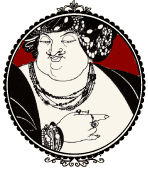

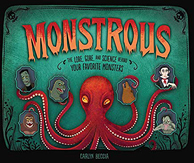
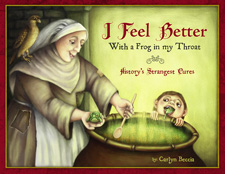
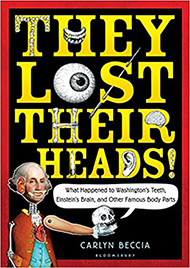




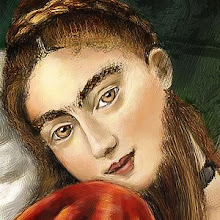


No comments:
Post a Comment